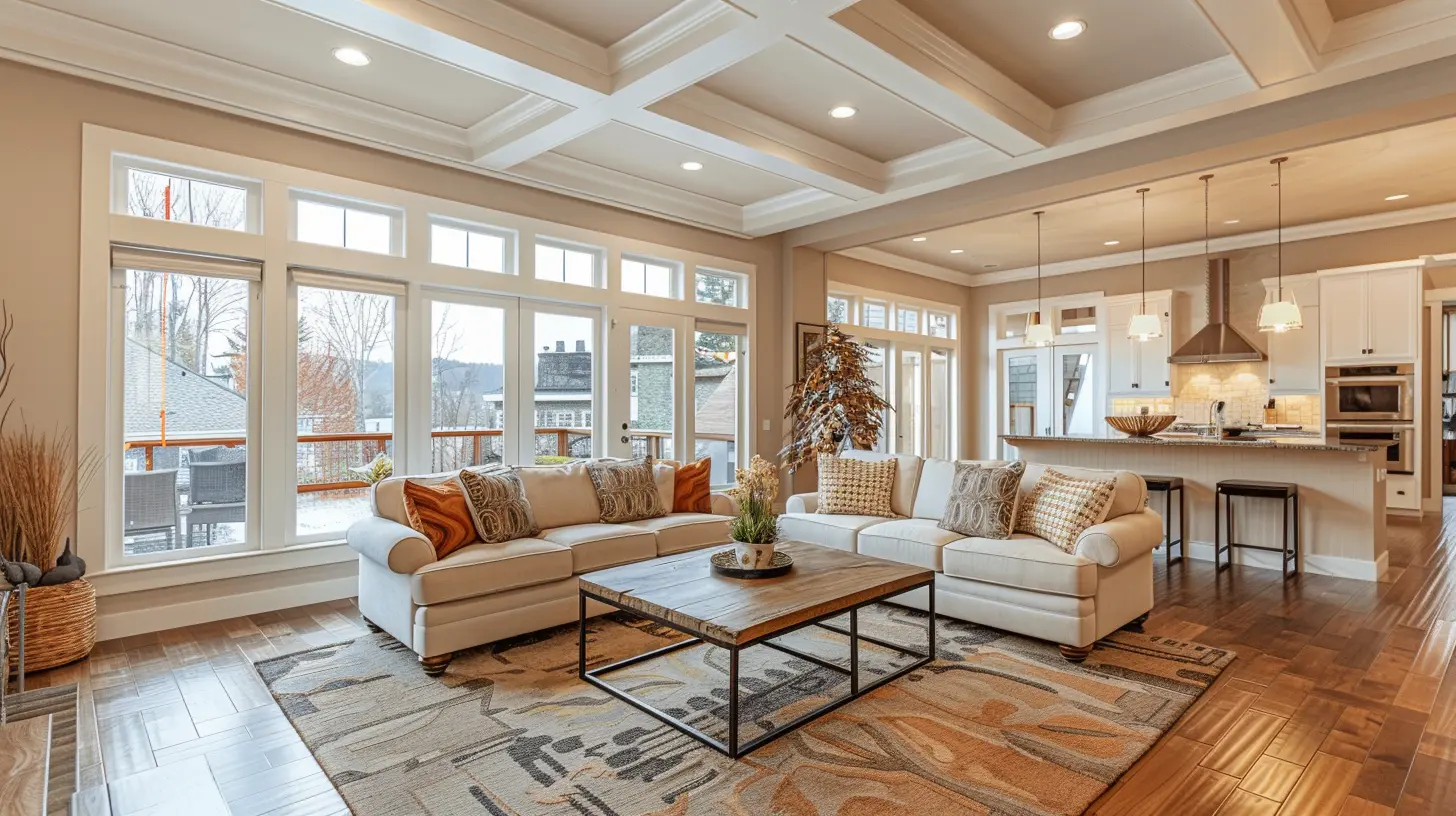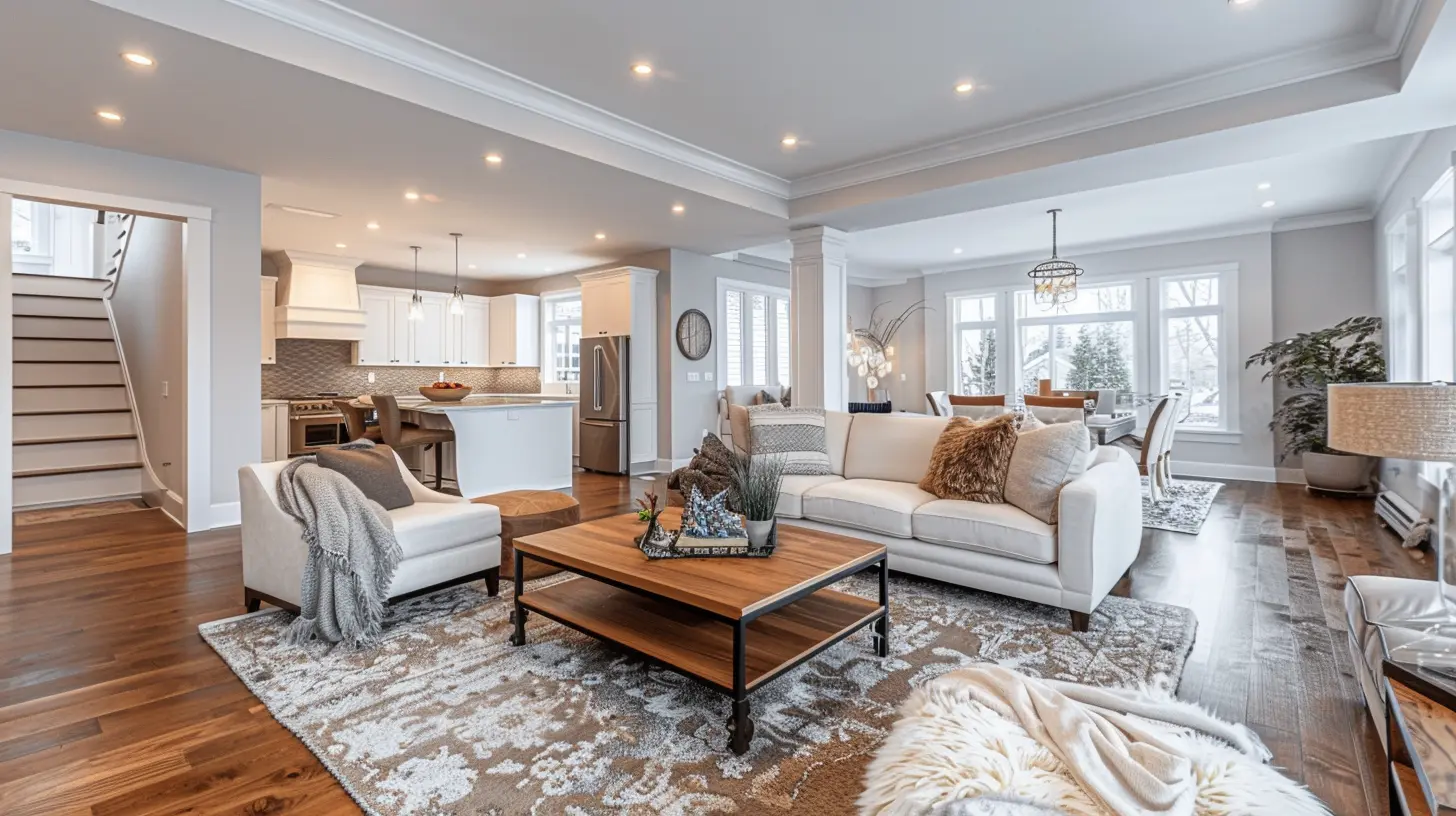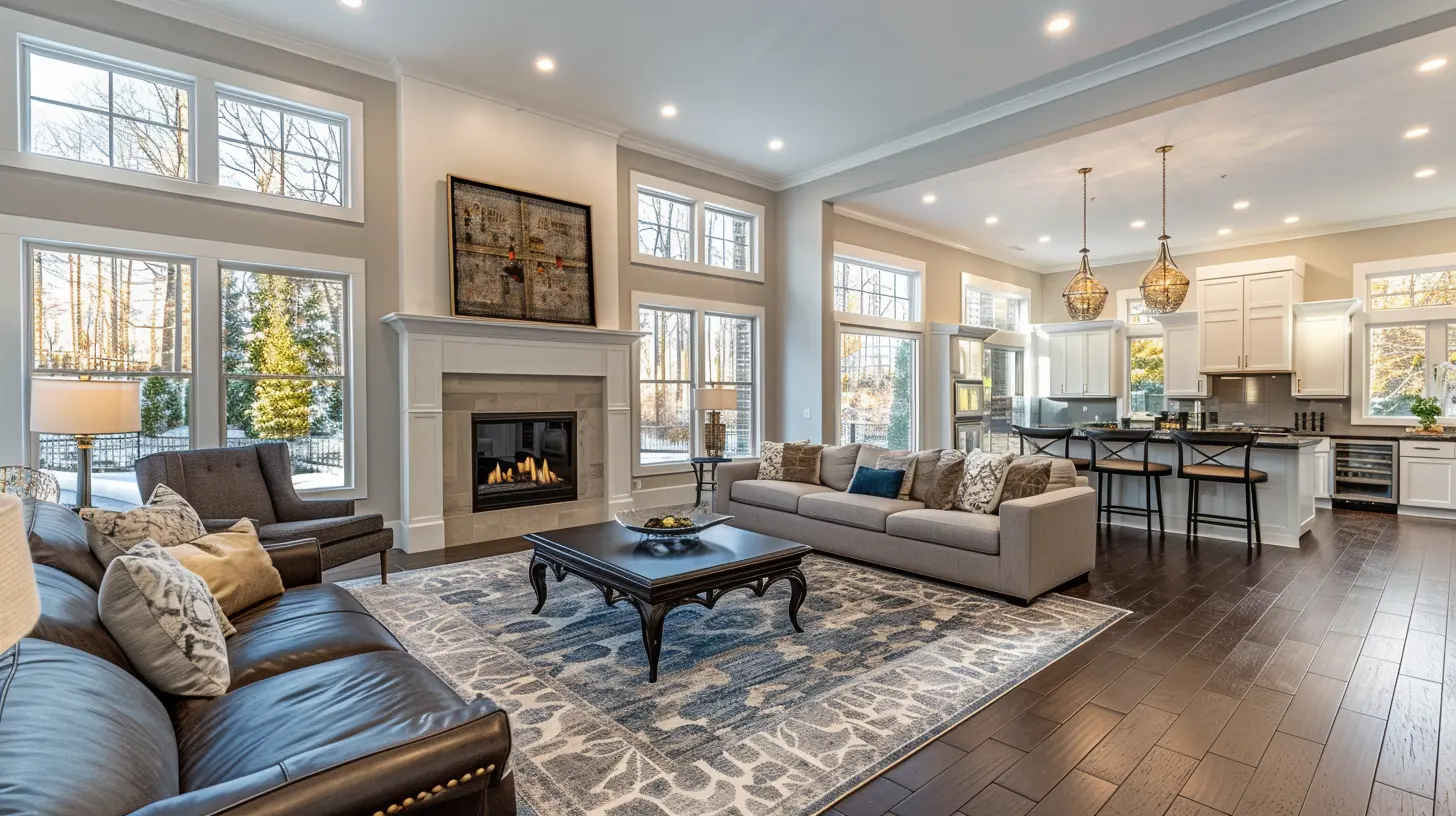Staging Open Floor Plans: Tips for Defining Spaces
18 April 2025
Open floor plans are incredibly popular in modern homes—offering spacious, airy layouts where the kitchen, living, and dining areas seamlessly blend. While this creates an inviting and social atmosphere, it can also pose a unique challenge: how do you define separate spaces without walls?
The key to staging an open floor plan is creating distinct zones that feel connected yet purposeful. Whether you're preparing a home for sale or simply want a more organized living space, strategic design choices can make all the difference. Let’s dive into practical, stylish, and effective tips for defining spaces in your open floor plan.

1. Use Area Rugs to Anchor Each Space
One of the easiest and most effective ways to define different areas in an open floor plan is by using area rugs. Rugs act as visual boundaries, signaling where one space begins and another ends.- A large rug under the dining table sets it apart from the living area.
- A cozy rug in the living space creates a warm and inviting feel.
- Smaller rugs can define reading nooks or workstations.
Just make sure the rugs complement each other in style and color to maintain a cohesive look. Think of rugs as puzzle pieces: each one plays a role in the bigger picture without clashing with the others.

2. Arrange Furniture with Purpose
Furniture placement is crucial in open-concept spaces. Without walls to guide you, it's all about positioning pieces in a way that naturally divides the room.- Create conversation zones – Arrange seating in a way that encourages interaction, such as a sectional facing a coffee table or chairs angled towards each other.
- Back-to-back configurations – Placing a sofa with its back to the dining area subtly separates the living space.
- Strategic placement – Use consoles, bookshelves, or side tables to create a sense of separation without blocking the flow.
Think of furniture as invisible walls—each piece helps define boundaries without closing off the space completely.

3. Incorporate Multi-Functional Dividers
If you want to create clear divisions without building walls, multi-functional dividers are your best friend. These provide structure while keeping the space open and flexible.Some great options include:
- Open shelving units – These not only define spaces but also provide storage and display opportunities.
- Screens or room dividers – These can be easily moved or folded when needed.
- Curtains or hanging panels – A stylish way to separate areas while maintaining an airy feeling.
Dividers add dimension to the room without making the space feel cramped or disconnected.

4. Leverage Lighting to Define Spaces
Lighting plays a huge role in differentiating areas in an open floor plan. Use different lighting techniques to highlight various zones.- Pendant lights over the dining table create a focal point.
- A statement chandelier in the living room adds warmth and elegance.
- Task lighting like floor or table lamps can define reading or workspaces.
By layering lighting, each section of the space gets its own identity while still flowing together harmoniously.
5. Vary Wall Colors and Textures
While open floor plans thrive on a unified color scheme, subtle variations can help define spaces while maintaining cohesion.- Accent walls can visually separate the living area from the dining space.
- Different paint finishes (like matte in one area and satin in another) subtly distinguish sections.
- Wallpaper or shiplap can add texture to specific zones, giving them their own personality without disrupting flow.
Color and texture act as silent room dividers—helping to structure the space without physical barriers.
6. Use Ceiling Treatments to Define Zones
Most people forget about the ceiling when staging an open floor plan, but it can be a game-changer. Simple ceiling treatments add depth and define spaces without overwhelming the room.- Wood beams or coffered ceilings subtly divide areas without closing them off.
- A change in ceiling color or material visually separates different sections.
- Statement light fixtures can draw attention to specific zones.
By treating the ceiling as a design element, you create invisible lines that guide the eye and define spaces.
7. Introduce Different Flooring Materials
A subtle but effective way to create distinction in an open floor plan is by varying the flooring materials.- Hardwood in the living area and tile in the kitchen can create a natural separation.
- A transition strip or border between floors can provide a clear divide without feeling abrupt.
- Patterns or inlays in flooring design can subtly differentiate zones.
This technique ensures the space feels structured while maintaining a cohesive design.
8. Incorporate Statement Pieces for Each Space
Each area should have a defining focal point—a statement piece that establishes its identity.- A bold dining table centerpiece or chandelier can anchor the dining space.
- A striking piece of art or a stylish fireplace can ground the living area.
- A sleek kitchen island naturally defines the cooking area.
These focal points add interest while making each space feel distinct within the open concept.
9. Keep a Cohesive Style Throughout
While it’s essential to define different areas, the overall style should feel cohesive. Choose a consistent color palette, complementary furniture, and similar decor elements to tie everything together.- Stick to three to four main colors throughout the space.
- Ensure furniture and decor match in style across different areas.
- Use similar materials (wood, metal, or glass) to maintain harmony.
Think of your open floor plan as a story—each section has its own character, but they all belong to the same book.
10. Maximize Natural Flow
Lastly, remember that open floor plans are all about flow. Don’t overcrowd spaces or block natural pathways. The key is to create division without disrupting movement.- Arrange furniture in a way that allows for easy navigation between zones.
- Keep sightlines open to maintain the airy, inviting feel of open spaces.
- Use subtle transitions (like plants, lighting, or art) rather than abrupt separations.
When you get the flow right, the home feels organized yet effortlessly connected.
Final Thoughts
Staging an open floor plan doesn’t mean dividing it into rigid sections—it’s about creating a balance between separation and connection. By using strategic furniture placement, area rugs, lighting, and subtle design choices, you can define spaces without sacrificing the open, airy feel that makes these layouts so desirable.Whether you’re preparing a home for sale or enhancing your own living space, these tips will help you achieve a stylish, functional, and well-defined open floor plan. Happy staging!
all images in this post were generated using AI tools
Category:
Home StagingAuthor:

Lydia Hodge
Discussion
rate this article
6 comments
Dax McDowell
Great insights! Staging open floor plans can really transform a space. I'm curious about how different color schemes can impact the perception of each area. Have you seen any unique staging techniques that effectively highlight functionality without compromising the openness? Looking forward to more tips!
May 2, 2025 at 2:58 AM

Lydia Hodge
Thank you! Yes, using contrasting color schemes can define areas while maintaining openness. Techniques like area rugs and strategic furniture placement effectively highlight functionality. Stay tuned for more tips!
Bethany Frank
Use rugs, furniture placement, and lighting to create defined areas in open floor plans, enhancing flow and functionality for potential buyers.
April 24, 2025 at 9:05 PM

Lydia Hodge
Absolutely! Rugs, furniture arrangement, and strategic lighting are key elements in staging open floor plans to create distinct and inviting spaces, making them more appealing to potential buyers.
Presley McMillen
Love these tips! Open floor plans can be tricky, but a little staging makes defining spaces easy!
April 22, 2025 at 6:36 PM

Lydia Hodge
Thank you! I'm glad you found the tips helpful for navigating open floor plans!
Ezra Love
This article offers valuable insights into staging open floor plans. Defining spaces effectively can truly enhance a home’s appeal, making it more inviting and functional for potential buyers. Great tips!
April 21, 2025 at 11:25 AM

Lydia Hodge
Thank you for your kind words! I'm glad you found the tips helpful for enhancing open floor plans.
Caitlin Strickland
Transform your space—staging turns vision into reality! Define, inspire, thrive!
April 21, 2025 at 4:25 AM

Lydia Hodge
Absolutely! Staging enhances open floor plans by creating defined areas that inspire potential buyers and highlight the home's best features.
Oscar McCollum
This article offers insightful tips on staging open floor plans effectively. Clearly defining spaces not only enhances aesthetic appeal but also improves functionality. Thank you for sharing these practical strategies that can truly elevate a property's presentation in today's market.
April 18, 2025 at 11:49 AM

Lydia Hodge
Thank you for your thoughtful comment! I'm glad you found the tips useful for enhancing both aesthetics and functionality in open floor plans.




